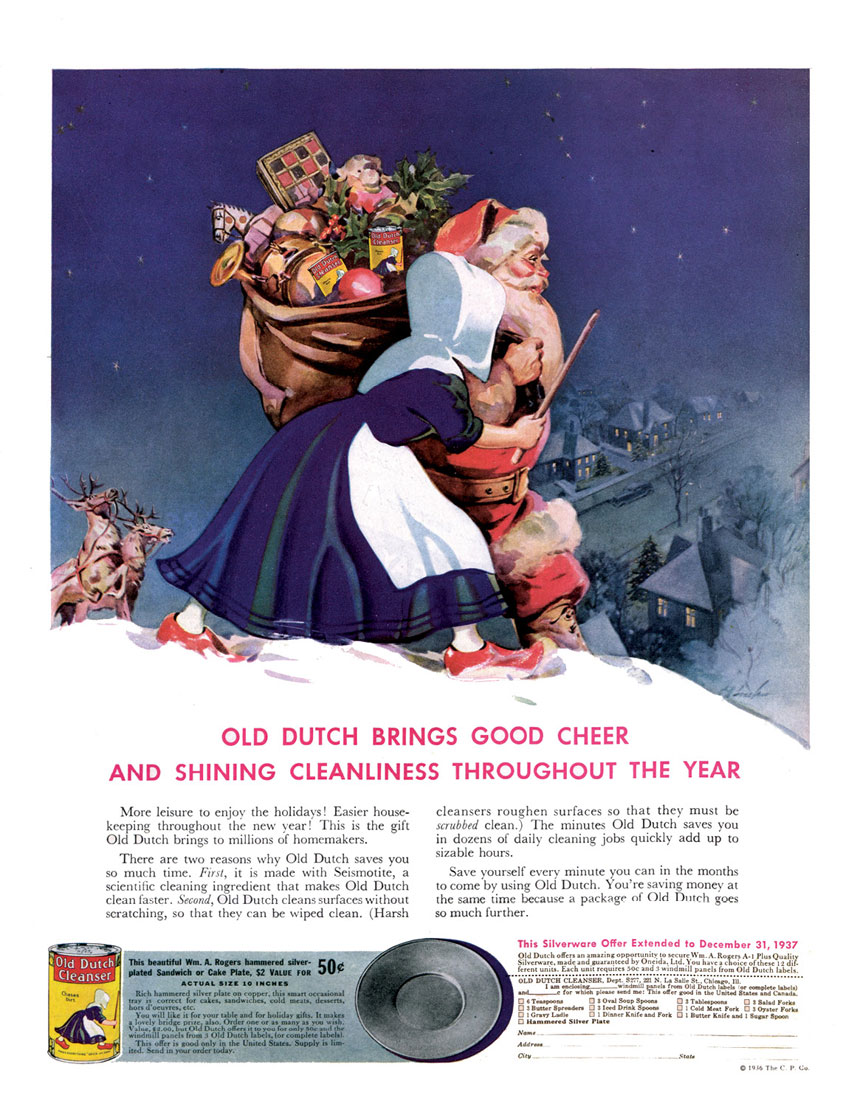At one time, this Dutch woman was one of the best-known brand mascots in America.
When Old Dutch Cleanser was originally trademarked in 1903, the manufacturers used the popular stereotype of the Dutch as fastidiously clean people. And they armed their Dutch huisvrouw (housewife) with a stick to “drive away dust and dirt.” For decades, her face remained hidden, but it suddenly appeared in the 1950s, revealing a younger, skinnier, happier, and prettier woman than the old image led us to assume.
The scouring powder was developed by the Cudahy meat-packing company as they were trying to develop a soap that could clean animal fat from the floor of slaughterhouses.
It claimed their product chased dirt and would make everything “spick and span.” The term was an ancient one, coming partly from Old Norse — spán-nýr — meaning as new as a freshly cut wooden chip. The Dutch word spik meant a nail. One scholar translated the original meaning of the phrase “as new as a spike from the fire and a splinter from the block,” the assumption being that something new was something spotless.
This article is featured in the November/December 2023 issue of The Saturday Evening Post. Subscribe to the magazine for more art, inspiring stories, fiction, humor, and features from our archives.
Become a Saturday Evening Post member and enjoy unlimited access. Subscribe now




Comments
Yes,where did America go traditional.
Sure wish they would try their hand at a liquid laundry detergent. I bet it would really work getting stains and dirt out.